Well, is this a first-world problem or what! Not only are we talking about going on vacation, but also about the “problem” of choosing between multiple cameras for said vacation. To be fair, I’m sure it’s a decision which many 35mmc readers have faced (this is a site about cameras and photography, after all). But still, a little perspective never hurt anyone!
Until about ten years ago, I only had one digital camera at a time, so I never even faced this dilemma. Then my dad gave me his Minolta SLR; now I had two cameras – film and digital. In the last four years, I’ve acquired a few more. And that means I have to make choices, which is especially tricky when it comes to holidays.
In this post I’m not going to try and come up with any universal answer (the universal answer, as we all know, is 42). Rather, I want to talk about what I took for a recent trip to Mumbai and Goa, how I weighed my camera options in light of my own priorities, and how I feel about my choices in hindsight. I’m also curious to know how you weigh your options, and if your approach is similar or different to mine.
What’s so special about holidays?
Holidays are interesting in that there are good reasons both for taking lots of gear, and for taking very little. For most of us, holidays only come once in a while, and often present a wide range of possibilities. As such, there’s a temptation to pack everything: DSLR for versatility, film cameras because we love film, Velvia for sunsets, Delta 3200 for nightclubs, wide-angle lenses for scenery, telephoto for wildlife, and so on.
But unless you have your own caravan (or at least a car), the take-it-all approach is not really feasible. Besides, holiday photo-ops feel unique, but the truth is that good photo-ops in our own towns and neighbourhoods are often just as unique and unrepeatable. Elliott Erwitt’s iconic photo of a bulldog on a porch was made just around the corner from his studio in Manhattan. He didn’t even have his camera; he borrowed his friend Hiroji Kubota’s Leica and quickly shot over half a roll of Tri-X.
What if I could somehow carry a vast amount of gear to cover every shooting possibility? In reality it would probably just get in the way. Carrying and using a lot of gear is both a physical and a mental challenge – the paradox of choice.
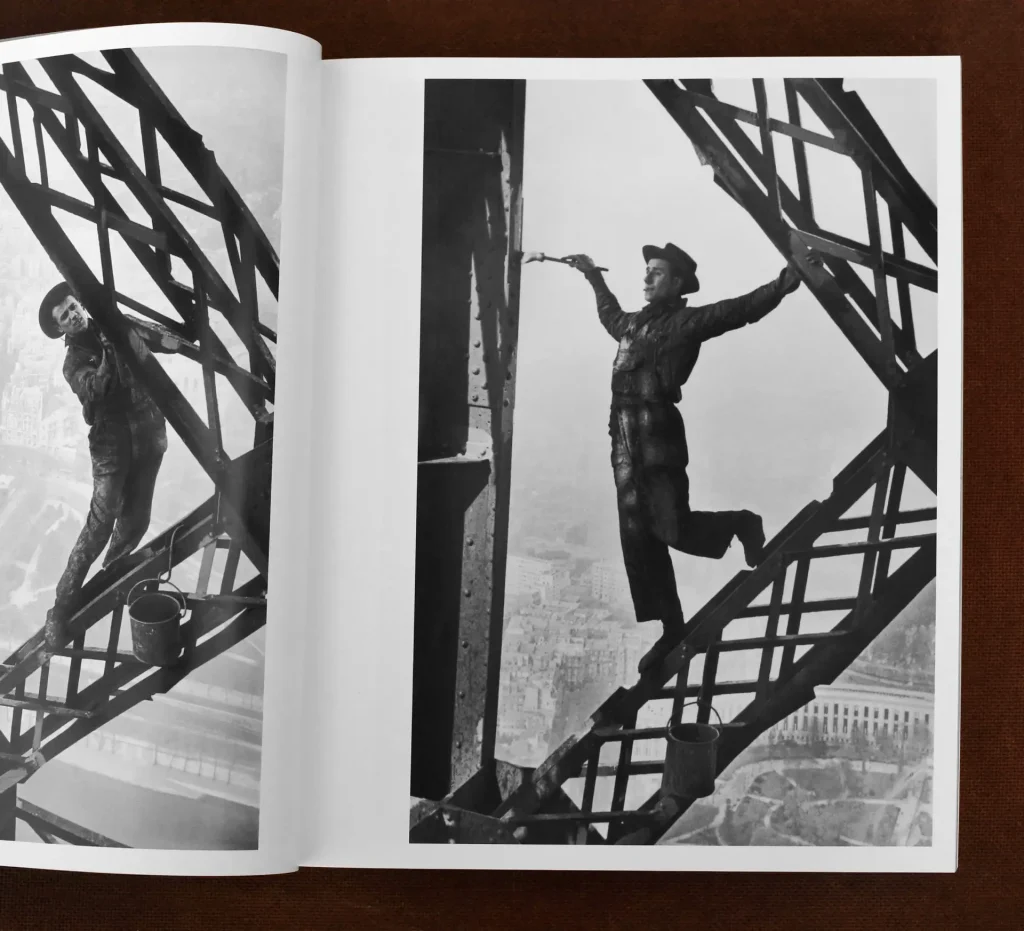
Marc Riboud had just one camera, one lens and a single roll of film when he made his unforgettable photograph of a painter on the Eiffel Tower. This is how he tells the story:
In 1953, I leave Lyon for Paris. These are my first steps in the capital, and in photography. With my Leica and only one film, I’m strolling near the Eiffel Tower, which is being repainted. I suddenly notice these paintbrush-bearing acrobats, and wishing to see them more closely … I [walk] up the tower… Hanging onto the little spiral staircase with only my 50mm lens, I can’t take close-ups or wide-angle shots, so I have only one choice left: that of the right moment. These constraints, these limited means, were my good luck… That painter was joyful, singing as he worked. I think photographers should behave like him – he was free and carried little equipment.”
I haven’t quite reached Riboud’s level of simplicity, but when I go on holiday, I’ve found that my personal limit is two cameras and a phone. Feeling free, carrying little equipment.
Which cameras?
So what kind of cameras? For me, it depends on the kind of holiday, what I expect to see and do, and how I’m feeling in the moment. Sometimes I’ll just take one or two film cameras; sometimes one film and one digital.
And which cameras specifically? With digital, the choice is easier since I only have two:
- DSLR: Nikon D5200
- Small underwater camera: Nikon Coolpix AW120.
Goa is on India’s western coast, and we had booked a villa by the beach, so I thought the underwater camera – recently acquired from eBay for just £39 – would be more fun than the DSLR.
As for film, I have nine(!) cameras, all functional. In my head, I divide them into three categories:
- Workhorse cameras: Minolta X-370s (35mm SLR), Leica M3 (35mm rangefinder) and Minolta Autocord (medium-format TLR).
- Indulgence cameras: Cameras which I don’t use regularly, but which I keep around because they are fun, unique or have sentimental value (I have three of these).
- Superfluous cameras: Cameras which I intend to donate or sell (I have three of these too).
I also have half a dozen homemade pinhole cameras, but I have never taken one of these on holiday (come to think of it, maybe I should!)
Of the workhorse cameras, I love the Autocord, but I find it heavier and slower to use than a 35mm camera, and as such, less well-suited for taking on holiday. It’s also a fixed-lens camera, whereas I have multiple lenses for both the Leica (28–50–135) and the Minolta (20–28–50).
Of the latter two, I chose the Minolta for a technical (and somewhat boring) reason. On my trip I planned to try out a black-and-white reversal (slide) film. The Leica M3, as you may know, does not have a light-meter. Normally I just guess the exposure, or sometimes use a phone app. These slapdash methods work well enough with negative film, but slide film is less forgiving. The Minolta on the other hand has a very reliable built-in meter, and after more than a decade of regular use, I have a good understanding of when to trust it (most of the time), and when I need to compensate.
Hindsight: the bad news
So how did it go? I’ll give you the bad news first.
Ruined film
Compared to most other film photographers I’ve spoken to, I shoot quite slowly. On a ten-day trip, I finished three rolls of film – and I ruined one of those through a stupid processing error.
I’ve seen social-media posts by people saying they poured fixer before developer by mistake, and while I was obviously sympathetic, deep down I always thought, “This would never happen to me.” I’m quite organised you see, and I label and store my chemicals nicely. But of course, this only works if you label them correctly in the first place. Turns out I had mislabelled my fixer as “ID-11 stock”, so my first roll of film (Ilford HP5) came out completely blank.
I didn’t even realise until I was done processing. The moment when you open the developing tank and get your first glimpse of the freshly-developed film is always special. In this case, the film had nothing on it at all. It took a few moments to sink in – a horrible feeling in the pit of my stomach as I realised what had happened, and what I had lost: photos from my 34-hour cross-country train journey with friends, walks by the beach in Mumbai, churches and bars in Old Goa. Truth be told, I am still not fully over it.
Digital has its risks too; for example, memory cards can fail or get misplaced. But film – even though I’ve shot hundreds of rolls – always feels like more of a gamble. If the camera is malfunctioning, or a photo is improperly focused or exposed, you often don’t find out until it’s too late. And even if film is exposed properly, it can be subsequently ruined by extreme temperatures, airport X-rays, or – as in my case – by development errors. For holidays, if you choose the “safer” option of digital, I don’t blame you. But I like film – and film cameras – too much, so I will persevere. I just need to be more careful when labelling my chemicals.
Flamingoes
Did I regret not bringing my DSLR? Just once, when my friend and I went to a flamingo sanctuary in Mumbai. This was an impromptu trip; had I known, I might have got my DSLR and tele lens just for this. In the event, I did the best I could with my Nikon Coolpix underwater camera, with its tiny sensor and 24-120 mm (full-frame equivalent) lens.
The first one is a wide shot, but the detail is not as good as what I’d get with a DSLR. Still, you get a sense of the sheer mind-boggling number of flamingoes. This year, around 54,000 flamingoes came to the Thane Creek Flamingo Sanctuary – a river of pink amidst the blue seawater.
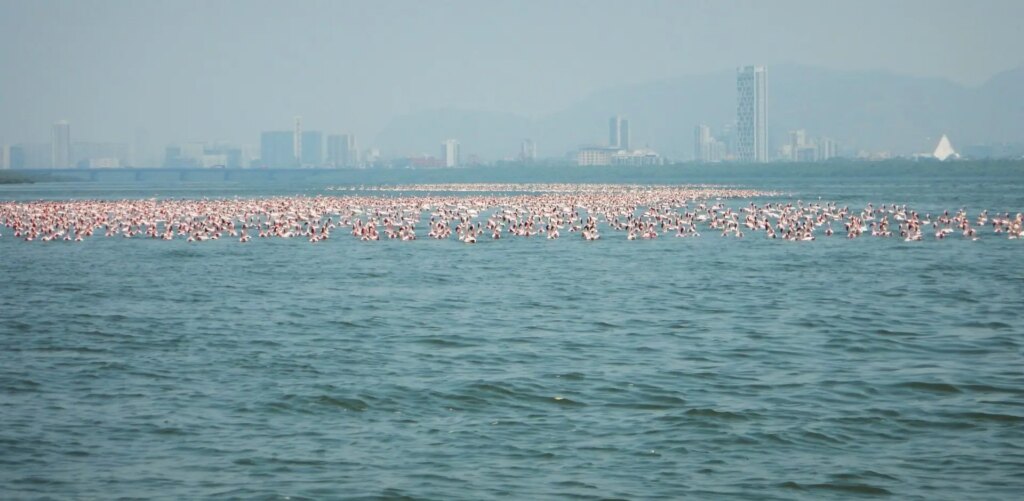
The real limitation was at the tele end. For my DSLR, I have a zoom lens which tops out at 300mm (full-frame equivalent); it would have been perfect for capturing these magnificent birds in flight.
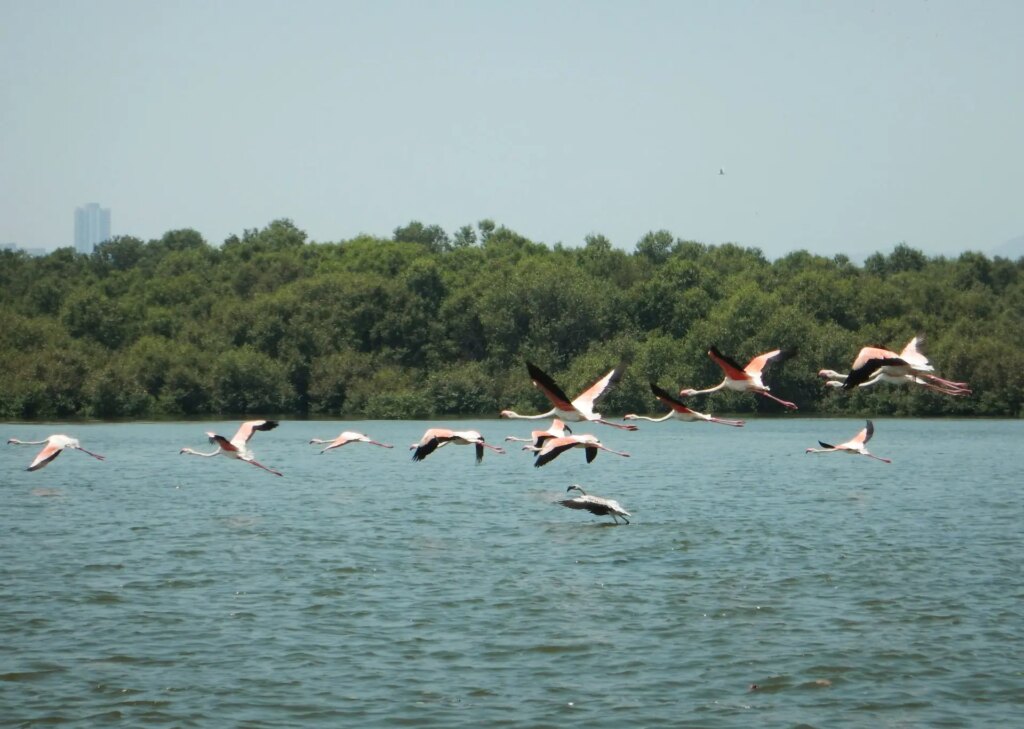
Hindsight: the good news
Otherwise, I was happy with my equipment choices. Let’s talk about the three cameras in turn.
Phone
My phone, a Google Pixel 2, is quite old, but I really like its camera (I’m sure the newer models have even better cameras, but I am slow to upgrade). Since I got the Pixel, sometimes I’ll just rely on my phone camera, leaving my DSLR at home which frees me to take film cameras instead.
For certain things, the DSLR is obviously superior: wildlife, portraits and low-light photography, to name a few. Well… I say low-light, but in Night Mode, and if there are no fast-moving objects, the Pixel 2 is surprisingly good. Here’s a Night Mode photo of Mumbai, taken from a monorail station.
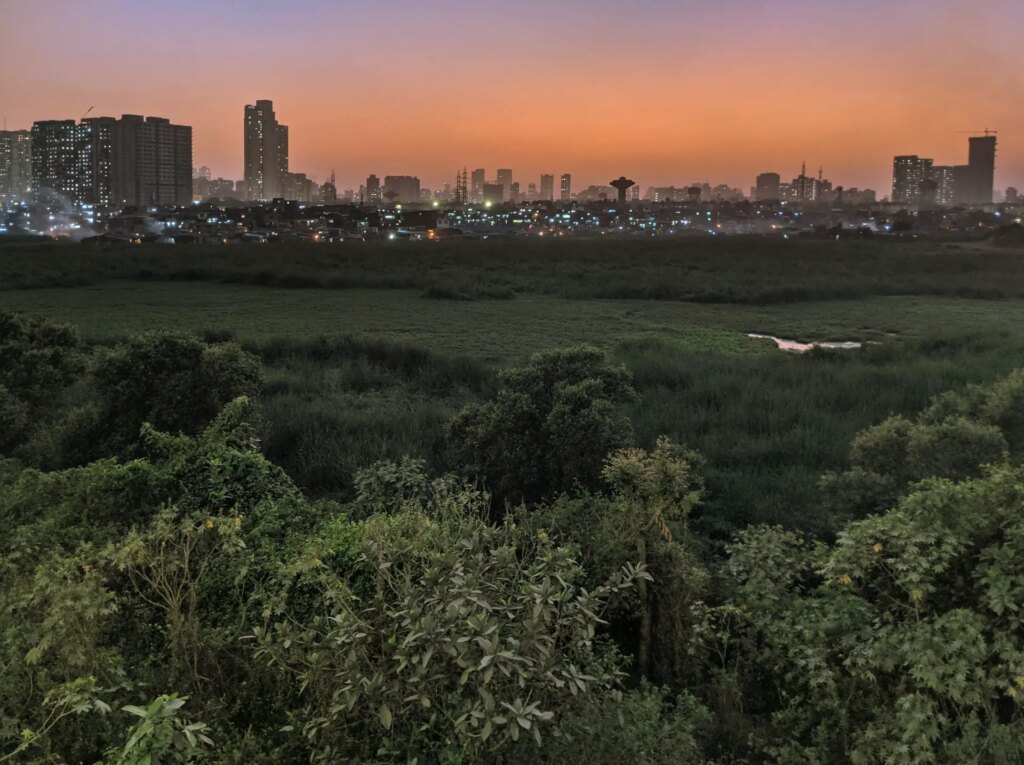
I edited the photo a bit; you can see a comparison below. The original photo had some distortion – see how the buildings at either end are splayed outwards – as well as a bluish cast. I fixed these in GIMP, which is free and open-source. Editing took about five minutes (I assume most readers know more about digital editing than I do, but if you want more details, feel free to ask in comments).
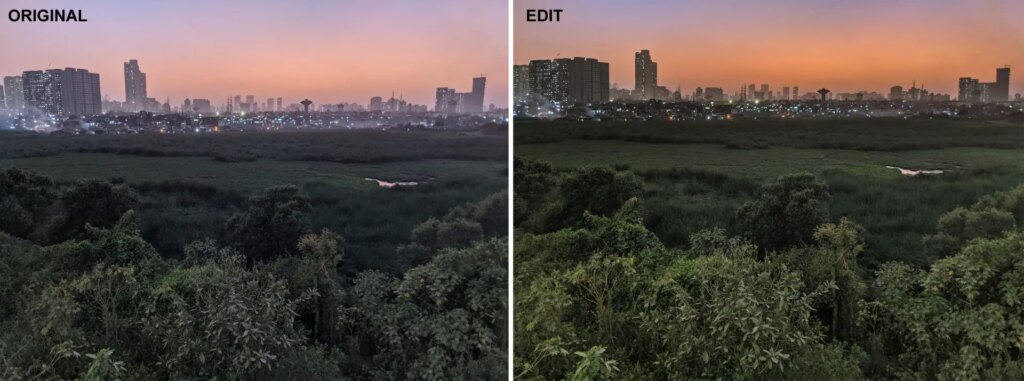
In general, the brighter the light, the less editing is required. 15 years ago, I would not have believed that you can get this sort of quality from a phone.
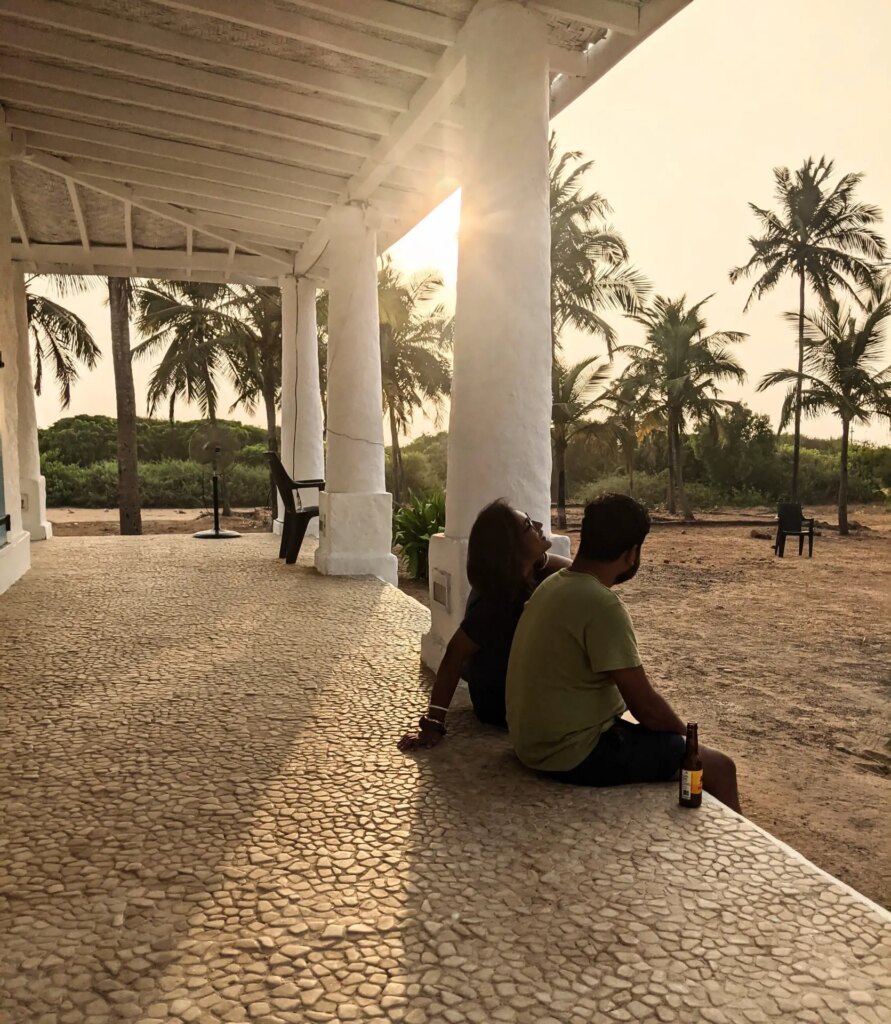
My phone even doubles up as a stereoscopic (3D) camera. I wrote another article which goes into more detail about my recent interest in stereoscopic photography, but in short, stereo photos are created by taking two photos from slightly different angles, and presenting a different channel to each eye.
On this trip I took several stereo photos with my phone. When seen through a 3D viewer – or with the naked eye, if you know how to ‘free-view’ – the two images below merge into a single 3D image.
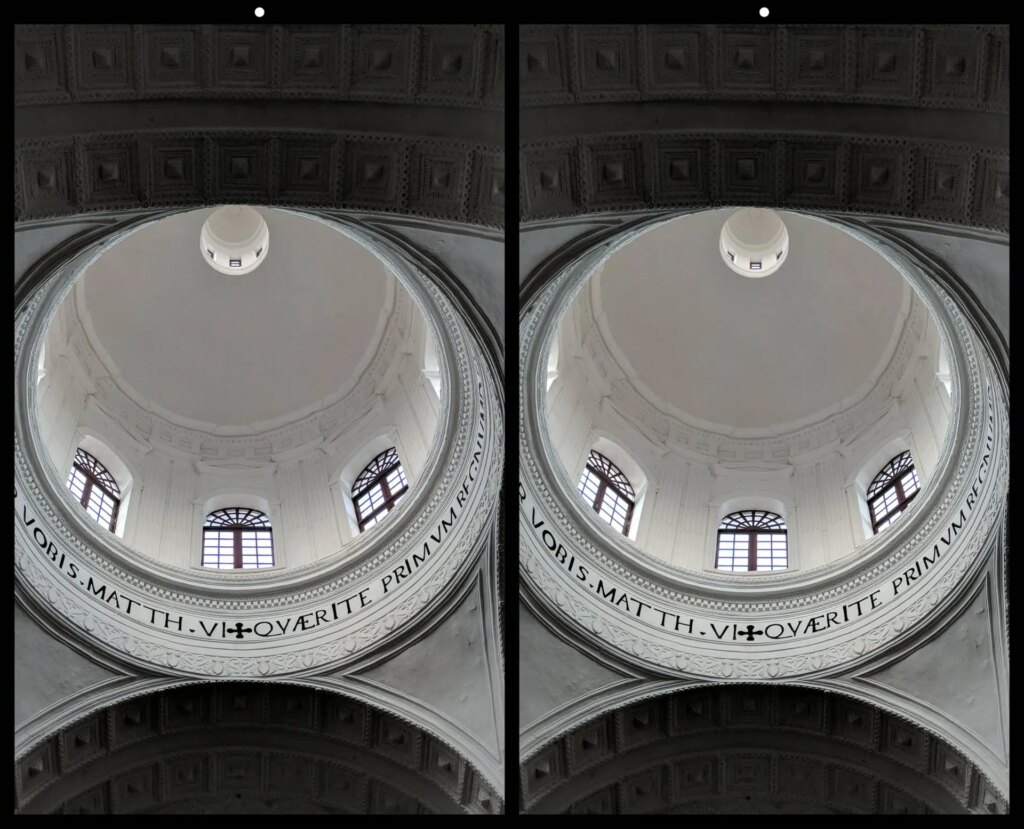
Here’s an anaglyph version of the same image; this one looks 3D when viewed through red-blue glasses.
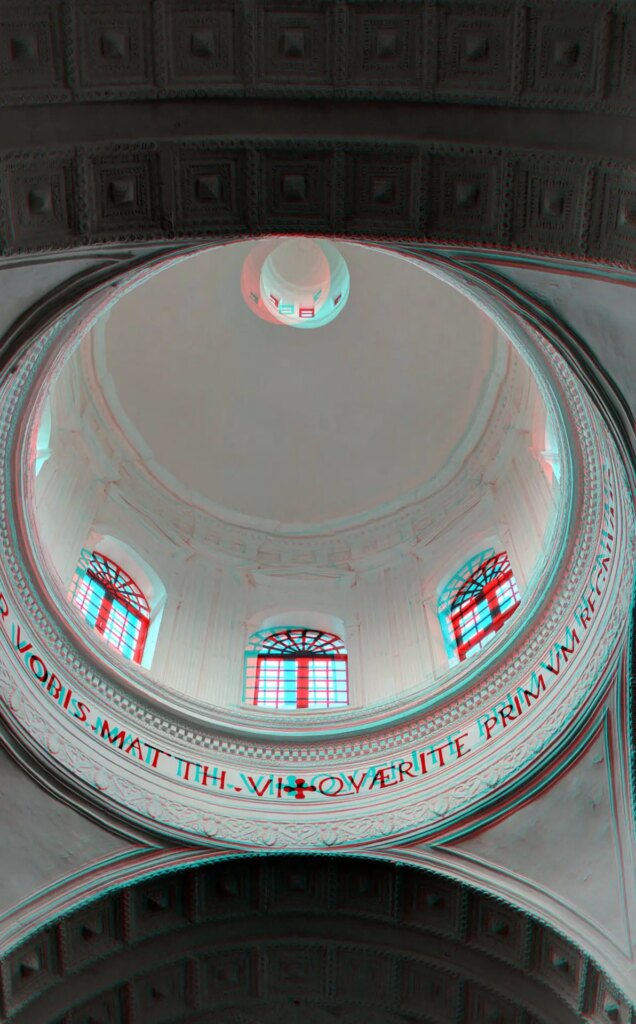
Underwater digicam
“Real photographers” may scoff, but I like my phone camera. For wide-angle shots, the Pixel 2 – outdated as it is – might actually outperform the Nikon Coolpix AW120. But the Coolpix can do one thing which my phone can’t: go in the water. The camera is not just “splashproof”, but waterproof down to 18m. I didn’t do any diving or snorkeling on this trip, but I did use it to take photos in the sea.
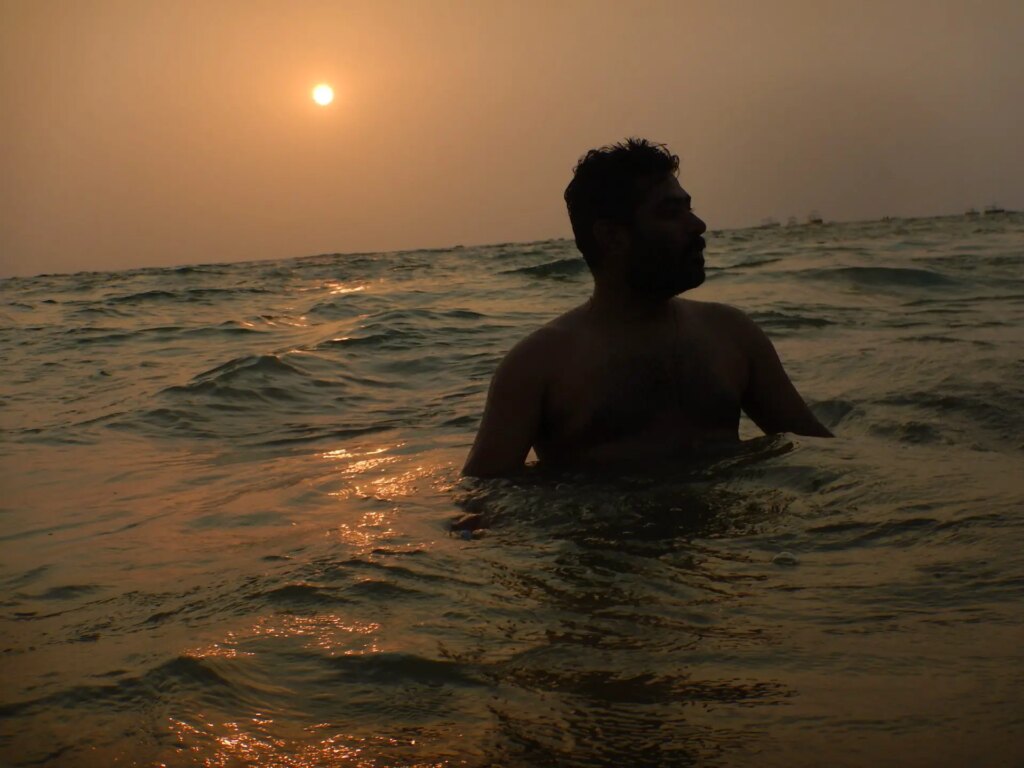
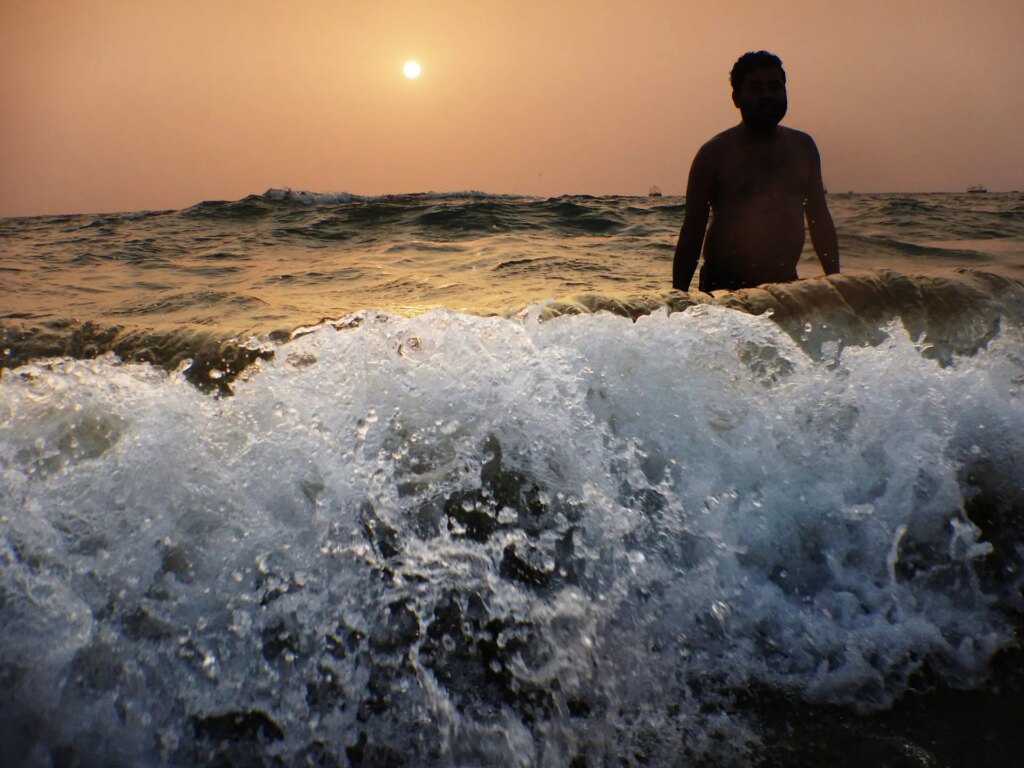
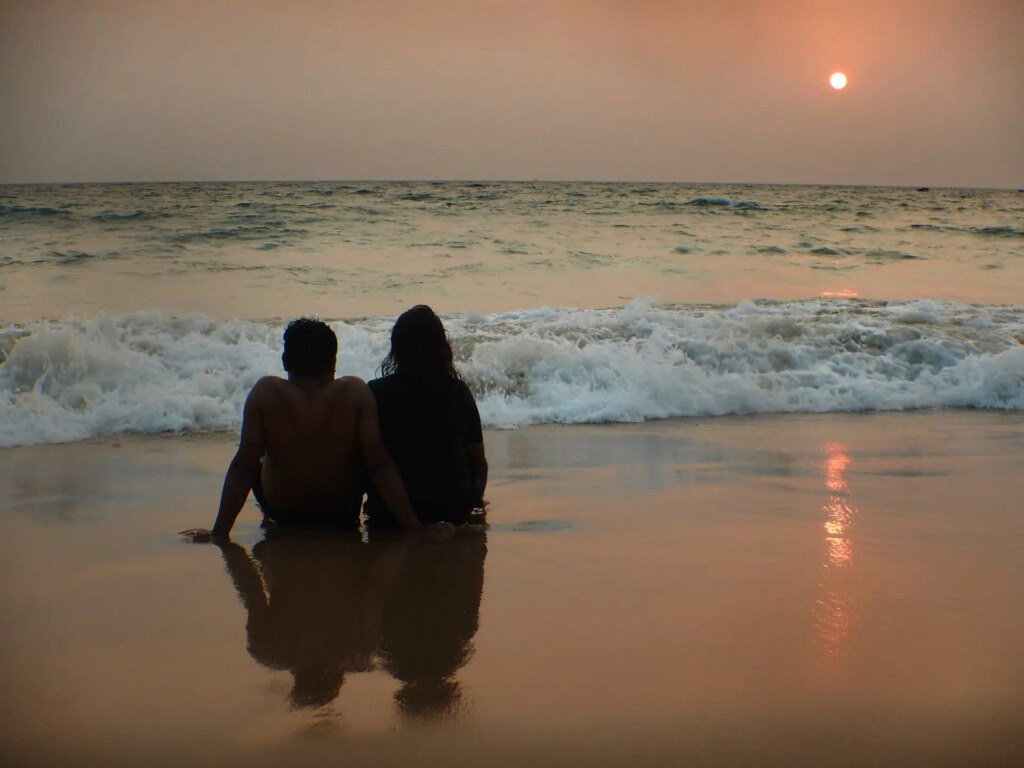
Okay, the last photo is technically not in the sea. But even on the beach, using a normal camera can be stressful – protecting it from sand, making sure your hands are dry, and so forth. It was nice being able to use the Coolpix without fear. Wet hands? No problem. Sand on the lens? Just wash it off.
35mm film camera
Earlier in this article I talked about the roll which I ruined through a processing error. That was Ilford HP5, which I thought I can develop in my sleep. The other two rolls were Argenti Scale-X, which I processed as B&W slides using the Adox Scala B&W Reversal Kit. This is far trickier than processing B&W negatives, but ironically, these turned out completely fine.
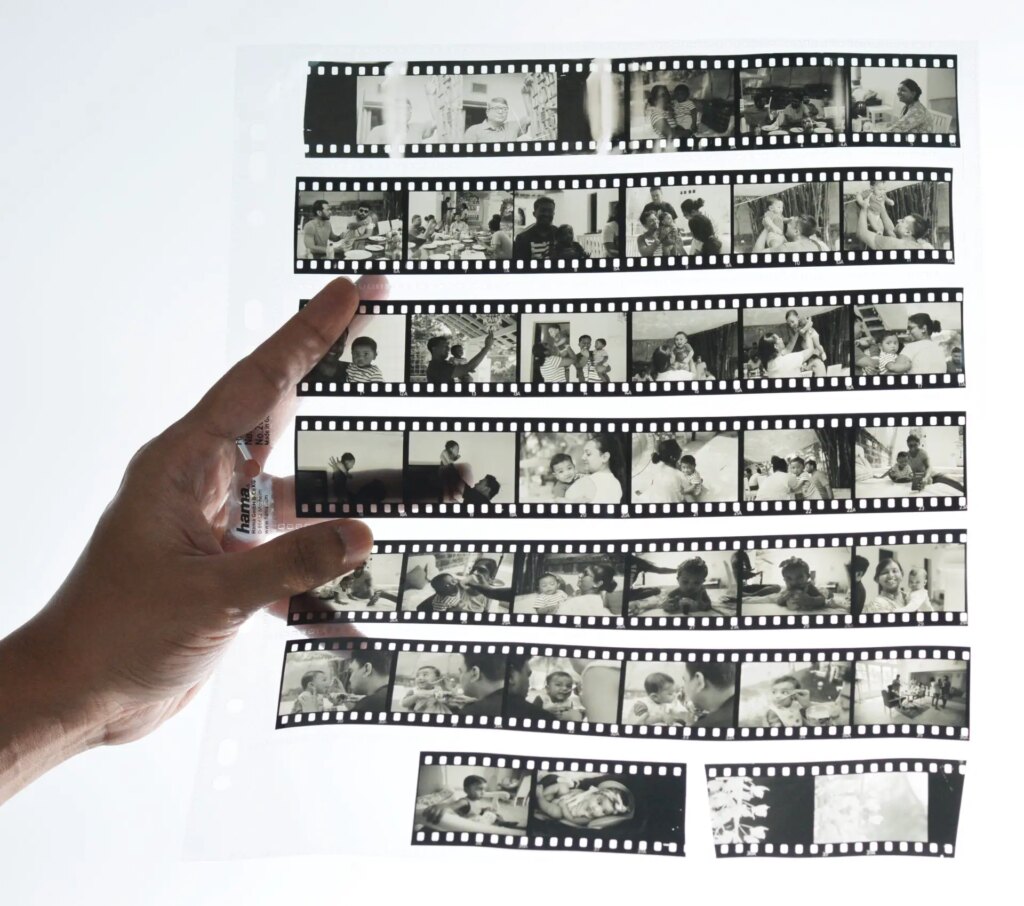
I have three lenses for my Minolta SLR:
- MD-Rokkor 50/1.7
- MD 28/2.8
- MD 20/2.8.
The 50/1.7 is the one I use most (my grandfather got it from Japan in the early 1980s). It’s a great lens – small and versatile, with a sharp but gentle rendering.
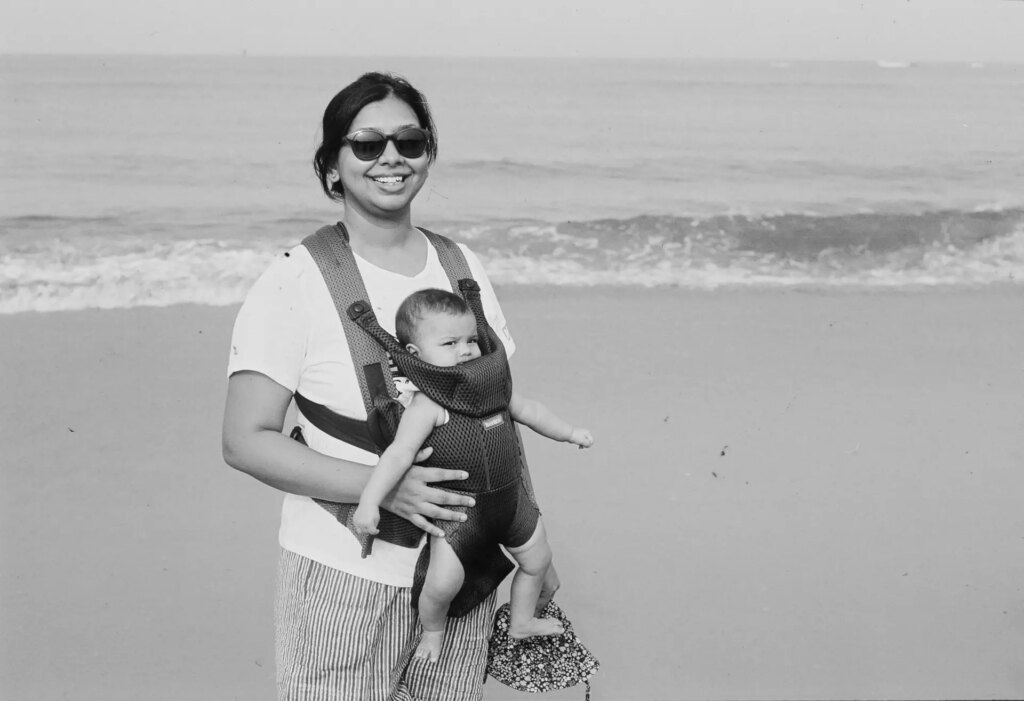
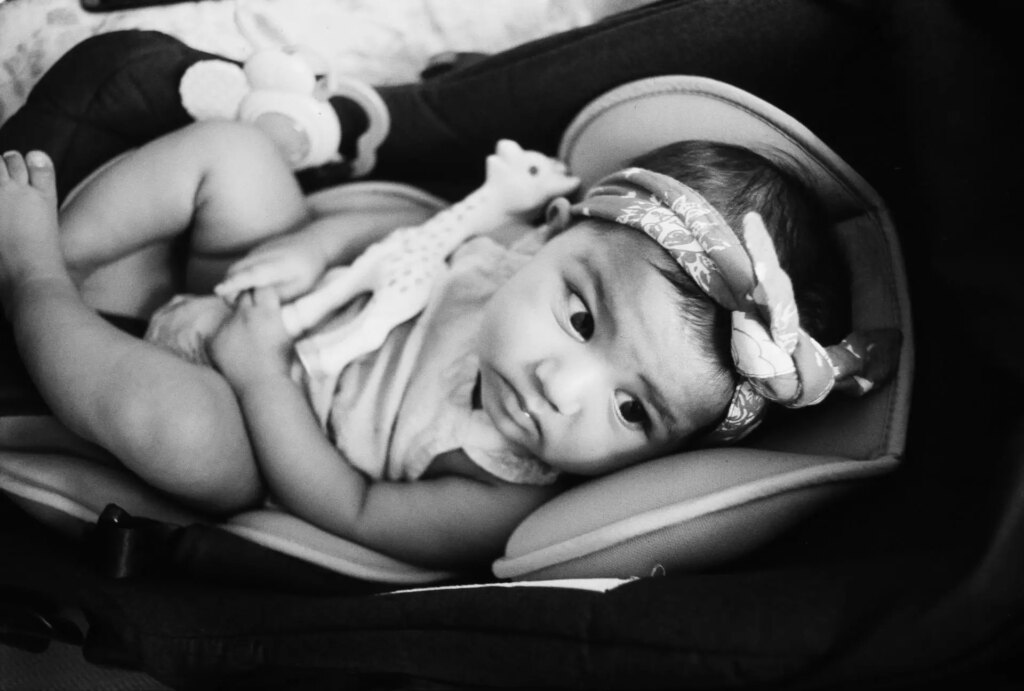
Our Goa holiday group was quite big – a dozen adults (my friends from college and some of their partners) plus four babies. I love taking pictures of babies and children. They are fun to interact with, and not too camera-conscious. I used the 28mm lens more than I usually do – getting up close and into the thick of the action.
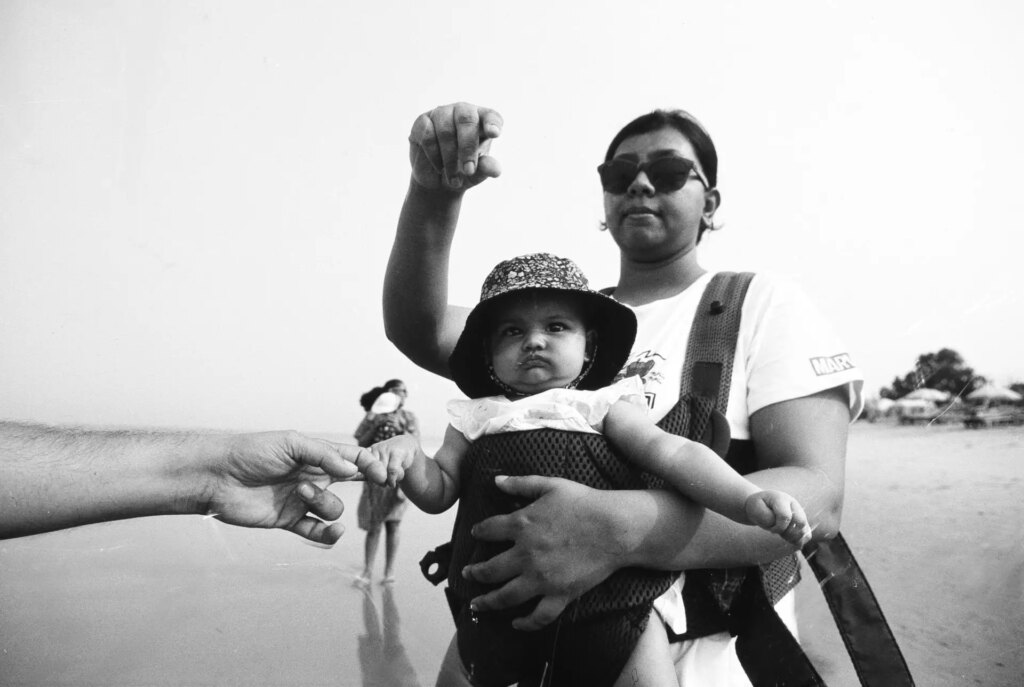
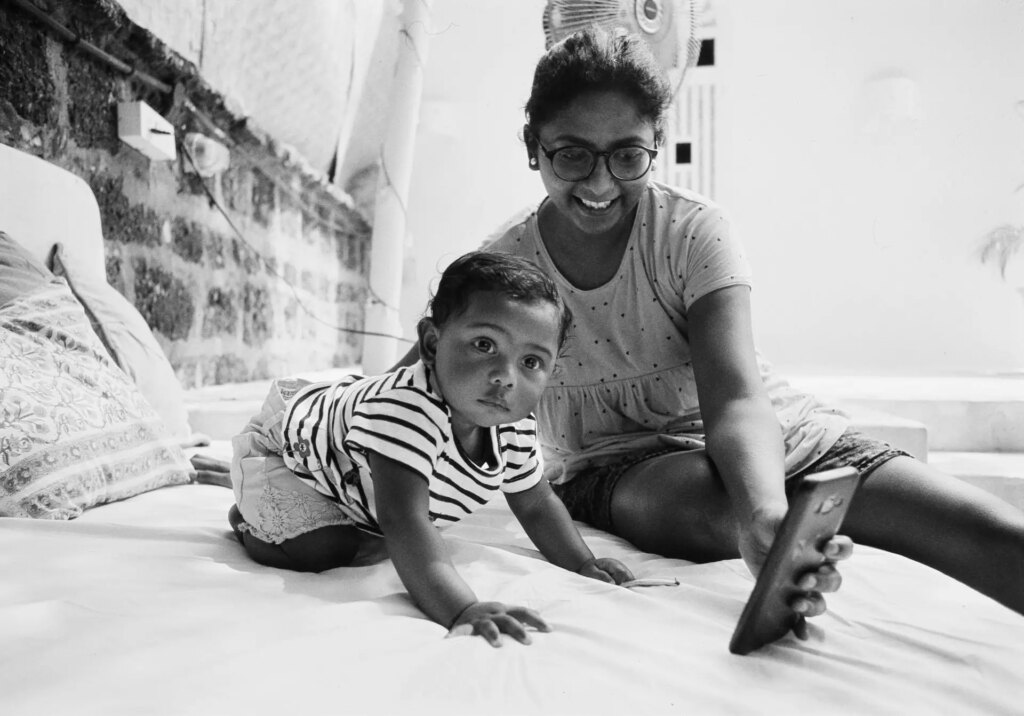
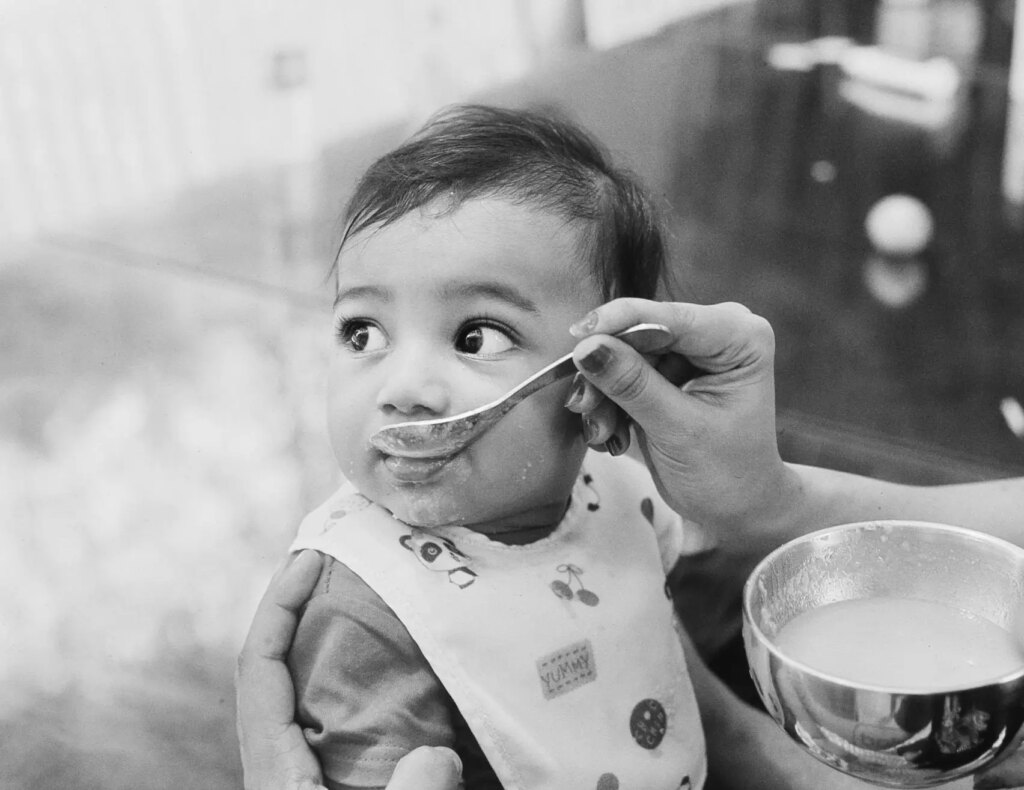
The 20mm is an impact lens. I use it sparingly, but especially up close, ultra-wides have a certain look which you simply can’t get with longer lenses. They take a bit of getting used to, but they’re super fun to use.
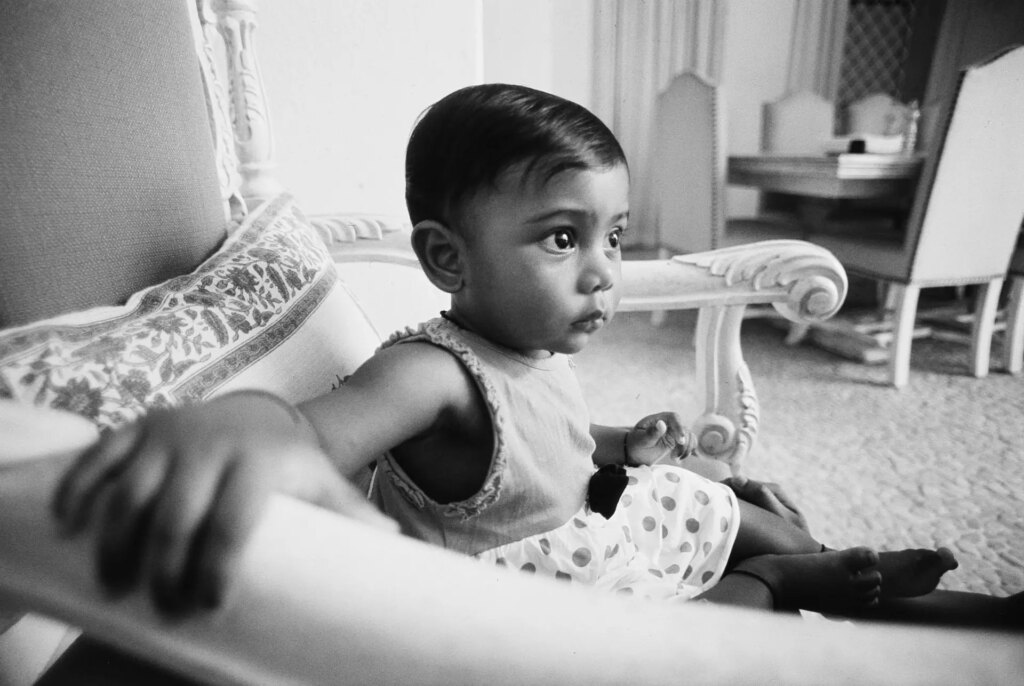
Final thoughts
So that was my last holiday! The next one I’m sure will be different, and I will have to go through the decision process all over again. I’m tempted to try something new, like taking my Minolta Autocord TLR (which I generally use in my own city) or a homemade pinhole camera. If you have more than one camera, how do you decide? Do you take just 1–2 cameras like me, or do you pack more? Have you ever regretted bringing too little or too much?
Thanks for reading. For more of my work – including but not limited to holiday photos – please feel free to check out my Instagram.
Share this post:









Comments
Stevenson Gawen on How Many Cameras to Take on Holiday? – by Sroyon
Comment posted: 30/05/2022
Just a few thoughts. Thanks for the article!
Comment posted: 30/05/2022
Markus Larjomaa on How Many Cameras to Take on Holiday? – by Sroyon
Comment posted: 30/05/2022
Well, OK, I actually bring two lenses but both the same focal length, 50mm. A Leica II with its 50/3.5 Elmar and a IIIf with a Canon 50/1.8. And the latter isn’t only a backup either… it’s the slower lens and slower B&W film (ISO 50-200) for daytime/outdoors, and fast lens paired with HP5 pushed to 1600 or more.
Every once in a while I think I should perhaps use only one film stock, but then, I just happen to like my “dual mode” setup.
And sure, sometimes I end up thinking that a wider or a longer focal length could suit a certain situation better. But I’ve made my choice and there’s nothing I could do about it right then, so regretting wouldn’t really help. In the past I have been carrying multiple focal lengths and even several different format cameras on a holiday. The result? I fumble with my equipment choices and lose the moment I wanted to capture in the first place.
Sure, I like my Minolta Autocord, too! And my baby-Linhof! And my M42 Pentax system! But I only carry one at a time. Having no gear choices to make frees me to make better choices at capturing the right moments.
Comment posted: 30/05/2022
Comment posted: 30/05/2022
Ken Rowin on How Many Cameras to Take on Holiday? – by Sroyon
Comment posted: 30/05/2022
Comment posted: 30/05/2022
Doug Anderson on How Many Cameras to Take on Holiday? – by Sroyon
Comment posted: 30/05/2022
I do not use a camera bag when traveling. If the Leica is not on my bedside table it is hanging from my right shoulder on a Domke Gripper strap, under a zipper jacket in cool or cold weather or under an unbuttoned long-sleeve sun shirt in warm or hot weather. The strap length is adjusted so I can steady the camera by pulling against the strap when I bring it up to my eye.
(I have been using the wartime red-curtain IIIc instead of my newer Barnack Leicas because it has by far the most sensitive shutter release - just a touch and it fires. It is worth at least a full stop of usable slower shutter speed.)
Comment posted: 30/05/2022
Charlie B. on How Many Cameras to Take on Holiday? – by Sroyon
Comment posted: 30/05/2022
My wife and I are planning to go to Europe later this summer and she capped me on how many cameras I can bring. I'm pretty sure I've got my list nailed down: Digital mirrorless with 2-3 lenses for zoom, regular photography, etc; Olympus 35 RC (compact rangefinder) loaded with B&W film for street photography; and a TLR loaded with color film for landscapes.
Comment posted: 30/05/2022
Stefan Wilde on How Many Cameras to Take on Holiday? – by Sroyon
Comment posted: 30/05/2022
Sorry about the lost film! Maybe that means you need to take the trip again one day?
As for cameras on holidays I agree, it's a tough choice. I brought my Rolleiflex to my last holiday trips to the Alps and to Rome, along with a Rollei 35s and a phone. In the digital years before that it used to be a micro four thirds camera with a 24-200 equivalent zoom. If I compare the digitak tobthe analogue travel experience I have to say that I of course took way more pictures with the digital camera and the convenience of that zoom lens is unbeatable. And it's just really nice to only have one camera, it spares you so much useless pondering about which camera is right now... When I changed back to analogze for travels, I would at first bring an SLR with a 50 mm, but then I changed to bring the Rolleiflex. It is a lot more fun than any other camera I own and it is such a conversation starter. I also brought the Rollei 35s as sort of a photography sketch book and the phone to send some impressions around. I found that I used the Rollei 35s very lttle though, so I will probably stop bringing it. So, a TLR and a phone are a fine setup for me ????
Anyway, great pictures and a very nice article, thanks so much for posting!
Comment posted: 30/05/2022
Daniel Rider on How Many Cameras to Take on Holiday? – by Sroyon
Comment posted: 31/05/2022
Comment posted: 31/05/2022
Hamish on How Many Cameras to Take on Holiday? – by Sroyon
Comment posted: 31/05/2022
Sony RX100vii and Leica Ic with 28 and 40mm voigtlander lenses. Problem is, I don’t own the Sony yet…
Comment posted: 31/05/2022
Comment posted: 31/05/2022
Comment posted: 31/05/2022
Comment posted: 31/05/2022
Philip Ahlquist on How Many Cameras to Take on Holiday? – by Sroyon
Comment posted: 31/05/2022
PS - I feel your pain with the HP5. I shot a roll of FP4 by the sea last summer, possibly my best ever roll of compositions in a favourite location, only to find at the end that the film hadn’t been winding on properly. I knew that it would be completely blank when I developed it but I did so anyway because I couldn’t bear to admit that I’d lost them all!
Comment posted: 31/05/2022
Tim Bradshaw on How Many Cameras to Take on Holiday? – by Sroyon
Comment posted: 31/05/2022
Obviously this is just what I do.
Comment posted: 31/05/2022
Comment posted: 31/05/2022
Comment posted: 31/05/2022
Jasper T Kauth on How Many Cameras to Take on Holiday? – by Sroyon
Comment posted: 31/05/2022
The wide-angle baby portraits are phenomenal. I think I need to dust off my 24mm lens and try some of my own ;-)
Comment posted: 31/05/2022
Comment posted: 31/05/2022
Lee on How Many Cameras to Take on Holiday? – by Sroyon
Comment posted: 31/05/2022
The most gear I ever brought on a trip was to Costa Rica in 2018 when I brought a combination of film and digital. I brought my D700, 17-35mm, 70-300mm, and 50mm lenses. I also brought a Nikon W100 underwater point and shoot for the kids, and my Nikon FE2 film SLR, plus film. Also in the bag was a tripod, a YN-560III speedlight, radio triggers, collapsible 24 inch square softbox, a 36 inch collapsible reflector, and 15 inch laptop. I only ever carried a portion of the gear at once because we had a rental condo for a home-base, at which the balance of my gear was kept during the trip.
Since the second half of 2018, I have traveled while shooting film exclusively. I usually bring two cameras, either a medium format camera and a 35mm SLR, or a 35mm SLR and a point and shoot. Last year I traveled to attend a cousin's wedding, bringing only my Canon 7, Jupiter 8, and Jupiter 12 lenses.
Comment posted: 31/05/2022
Comment posted: 31/05/2022
david hill on How Many Cameras to Take on Holiday? – by Sroyon
Comment posted: 31/05/2022
Comment posted: 31/05/2022
Alan on How Many Cameras to Take on Holiday? – by Sroyon
Comment posted: 31/05/2022
Contax N1 with 17-35, 24-85, 70-300 lenses (for general everything, everywhere shots, including landscape)
Leica M7 with Summicron 50 and 35 (for colour street shots)
Minolta CLE with M-Rokkor 40 and 28 lenses (for black and white street shots)
Olympus 35RC with small Rollei flash (for daytime fill-in or nighttime flash street photography)
Contax TVS (for quick snap shots, obvs)
Fujifilm X-Pro 1 with 35, 18 and 18-55 (as a digital back up, or for night time street photography)
Yashica-mat 124g (medium format square street photography)
Bronica RF645 with 45 and 65 lenses, and RF645 flash (for medium format street photography, with the option of daytime fill-in flash)
Either I have a problem, or this is actually a very well thought out plan.
Comment posted: 31/05/2022
Hans Gustafsson on How Many Cameras to Take on Holiday? – by Sroyon
Comment posted: 01/06/2022
I'm going on a three week hike in the Swedish mountains this summer and have spent a silly amount of time pondering over what to bring. As I am predominantly a bird/nature photographer, leaving the DSLR and supertele lens at home just isn't an option. However there is a limit to what I can carry and that combo obvs doesn't lend itself to any kind of wider shots.
I thought of adding a 18-200 zoom lens but then you also have to factor in the weather. Weather in the mountains changes quickly so there is a need to be able to stow the camera quickly and also, carrying a heavy DSRL around your neck for three weeks isn't all that tempting.
So, I've finally decided that i will pack my D500 with 300PF and 1.4TC easily accessible in the backpack and a Sony RX100ii in the leg pocket.
Comment posted: 01/06/2022
Charles Higham on How Many Cameras to Take on Holiday? – by Sroyon
Comment posted: 01/06/2022
Comment posted: 01/06/2022
David Morgans on How Many Cameras to Take on Holiday? – by Sroyon
Comment posted: 01/06/2022
Comment posted: 01/06/2022
Daniel Castelli on How Many Cameras to Take on Holiday? – by Sroyon
Comment posted: 01/06/2022
I like this article...it provokes great comments, plus you get insight as to what other people carry and how they solve the photo travel problem.
I don't change up my style or approach when I travel. Walking through Central Park of hanging out at Speaker's Corner in London, it's all the same to me. I'm a people-centric photographer, and I like to find the common bonds that we all share.
I carry a M2 or M4-P with just a 35mm wide angle; HP-5, and good walking shoes. Back in our hotel room I've got an Olympus XA or a Leitz-Minolta CL with a 40mm f/2.0 lens. I have the Domke F5 ripstop nylon bag that everything fits into. I allocate two rolls per day: one 36 exp. & one 24 exp. A really good piece of chocolate for emergency energy. I'm GTG.
Old injuries and arthritis have slowed me a bit, so I tend not to get my subject upset, because even a short-legged Corgi could probably outrun me.
My bigger concern is the state of the new x-ray equipment that can damage film even with one pass through the machine.
Comment posted: 01/06/2022
Jay Dann Walker in Melbourne on How Many Cameras to Take on Holiday? – by Sroyon
Comment posted: 04/06/2022
Film or digital?? Or both?? A vacation purely or mostly for photography, or for other reasons with photography as a secondary purpose?? Whichever you opt for, it will mean a different approach to the gear you carry.
In the past I took everything with me. Also at least 50-60 rolls of film. Thankfully, except for the obvious fact that I'm now much older and far less able to carry all the photo equipment I own, I try to be more sensible with the gear I pack. Airport Xray scanners are now so lethal, I no longer take film when I go overseas. This is sad, but an inevitable part of 21st century life. So digital it is.
One camera - in my case a Nikon D700 or D800 or a more recent purchase, a Fujifilm XT2. Two lenses, max - again, in my situation, a wide angle (28 or 25, depending on what you shoot most of, the former for architecture and static shots like landscapes, the latter for street and people work) and a short tele (my Nikon 85/1.8 does it all for me, but you may be happier with a 180). Lens. As the French say, "chest tout!!" - this combo will do everything you want it to. Also hoods and filters. Cards, of course. And that's it.
In your case, the Minolta and three lenses would be, I reckon, an ideal film kit. It will do everything for you, but will be more bulky as you also have to carry film with you. Al this said, unless you are almost 75 as I am, you will get by, even with a heavy backpack.
Comments to this story are very sensible. Of those, I think Daniel Castelli is the best of the lot, at least for my needs. One camera, one lens, and film. (Then I read he also keeps a couple of back-ups at his hotel, but hey, his total kit is still light).I can see myself taking his good advice and taking my Contax G1s and two lenses, 28 and 90, altho' the latter is not exactly the best short tele ever made - maybe even two cameras, not all four G1s which I own.
Unlike Daniel I've never had anyone's dog try to chop me into bite-size bits, but I once had someone's cat go feral on me during a portrait session, and got thoroughly scratched in the process. I had Nikon D 60/2.8 and likely got too close for feline comfort...
To sum all this u, vacations are highly personal experiences and most are often far too short in duration for our liking, so it's vitally important for us carefully consider and plan what gear we take. The KISS principle is, at least to me, the best ever - keep it all as simple as possible, enjoy your photography but concentrate on the journey.
From Dann in Melbourne, Australia
Comment posted: 04/06/2022
Florian on How Many Cameras to Take on Holiday? – by Sroyon
Comment posted: 05/06/2022
Comment posted: 05/06/2022
Kevin T on How Many Cameras to Take on Holiday? – by Sroyon
Comment posted: 05/06/2022
Comment posted: 05/06/2022
Baladino on How Many Cameras to Take on Holiday? – by Sroyon
Comment posted: 07/06/2022
Comment posted: 07/06/2022
Comment posted: 07/06/2022
Comment posted: 07/06/2022
Anindya K Maity on How Many Cameras to Take on Holiday? – by Sroyon
Comment posted: 31/12/2022
1) For long trips with lots of serious photographic opportunities-I carry 2 digital bodies, one with a short zoom(24-70),the other with a tele(prime or zoom).I don't like changing lenses on the go for digital cameras.
2) For serious street & candid photography (lots of time and opportunities) -I carry 2 film slr bodies(both with 400 speed film), one with 50mm,the other with 135mm when I am outdoors. For indoors, I attach a 28 or 35 on one and the 50 on the other. So 2 bodies and 3 lenses in all. I am thinking of adding another body with high speed film for night shots.
3) For short day trips, I carry one film body with fixed lens(eg Canonet,Voigtlander) or one film slr with a 50 and a 35mm.
4) For trips with doubtful photo opportunities, I usually carry a fixed lens camera like Canonet/Voigtlander Vitoret DR/Nikon L35AF ,which is small and easy to carry, just to cover any photo opportunities that may arise.
I don't like carrying both digital and film equipment for the same trip. Have only done that twice, and on both occasions, I used either the film or digital equipment for a session, never both.
PS: I loved the child photos.